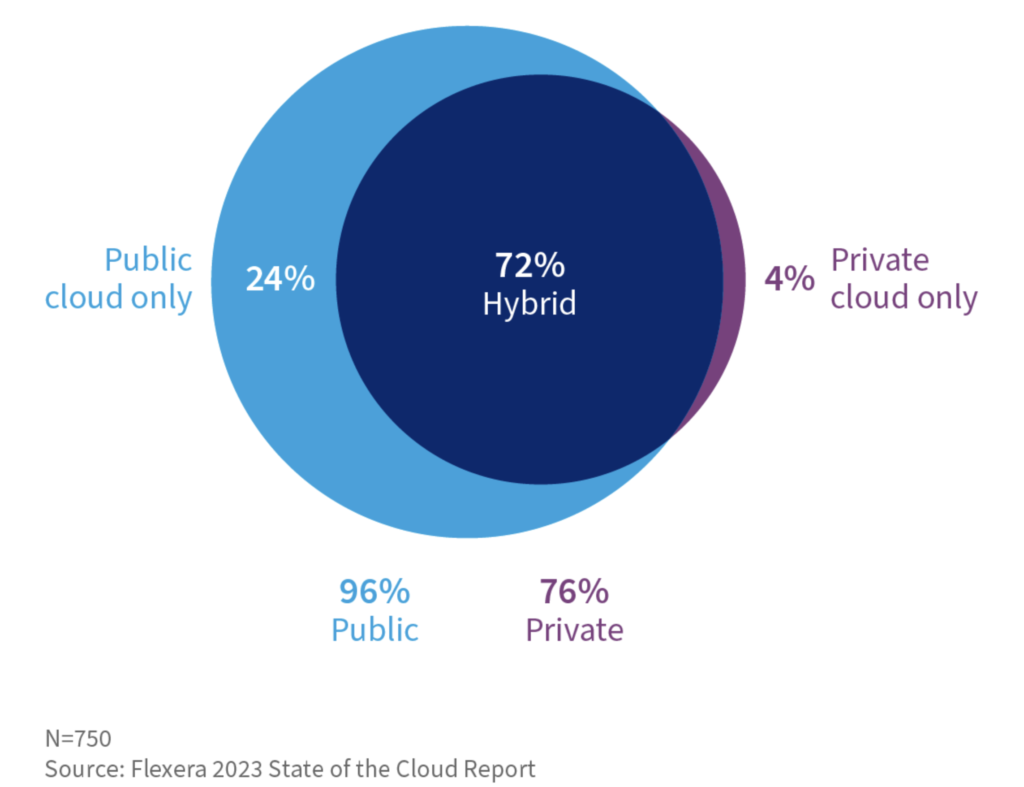According to Flexera’s 2023 State of the Cloud Report, Hybrid continues to be the preferred cloud deployment model for 72 percent of organizations. Although it offers the scalability and flexibility of the cloud with the control and data protection of on-premises infrastructure, the hybrid strategy is not without challenges. Storage is among them. How does an organization create cloud-like performance with on-premises storage?

Having applications and data distributed across cloud, on-premises and edge environments requires a significant amount of orchestration and management to ensure proper alignment with storage. However, provisioning on-premises storage has traditionally been a cumbersome, manual process that doesn’t match the on-demand, self-service cloud experience.
In a recent ESG survey, 93 percent of IT decision-makers said storage and data management complexity is impeding their digital transformation efforts. Additionally, 95 percent said improving data utilization is a top business priority. To address these challenges, 94 percent said it is critical to bring the cloud experience on-premises.
AI-Powered Management and Provisioning
HPE is addressing that challenge with the recent introduction of the Alletra 5000 hybrid storage array. Built from the DNA of HPE’s Nimble Storage Adaptive Flash Array, Alletra 5000 arrays are designed to provide cloud-like performance in on-premises storage. These arrays truly bridge the gaps.
Driven by HPE’s InfoSight artificial intelligence platform, the Alletra array simplifies and automates on-premises storage management, enabling provisioning and upgrades with the speed and agility of cloud storage. It’s possible to monitor and manage hundreds of arrays from a single, cloud-based console that’s accessible from any location on any device.
The InfoSight platform also enables automated, intent-based provisioning that eliminates the guesswork involved with provisioning storage across on-premises and cloud environments. Using predictive analytics, intent-based provisioning eliminates the need to manually specify many of the details typically required for provisioning such as RAID types, block size and data reduction techniques.
Instead, an administrator simply has to select a workload type, its capacity requirements and protection policy. The AI engine then evaluates how similar workloads utilize resources, predicts how resource utilization will likely grow based on historical patterns and automatically determines where data should be stored across the entire environment.
Increased Flexibility Whether Cloud or On-Premises
HPE says this automation accelerates application performance by up to 25 percent over previous HPE Nimble Storage Hybrid Flash Arrays. It also predicts and prevents disruptions across the entire storage environment, including secondary backup and disaster recovery workloads.
Additionally, Alletra 5000 enables cloud-like subscription-pricing models. Organizations can choose between purchasing capacity on a CapEx basis or on a pay-as-you-go OpEx basis. The option to acquire on-premises storage on a flexible subscription is an important one. It not only reduces budget constraints but eliminates traditional storage concerns about overprovisioning and under-provisioning.
Hybrid cloud offers tremendous operational benefits, but managing storage infrastructure on-premises, in the cloud, and at the edge can be a resource-intensive process. It inevitably negates some of the efficiency organizations have come to expect in the cloud. Contact us to learn more about using HPE Alterra 5000 arrays to bring a cloud-like experience to your on-premises storage.






